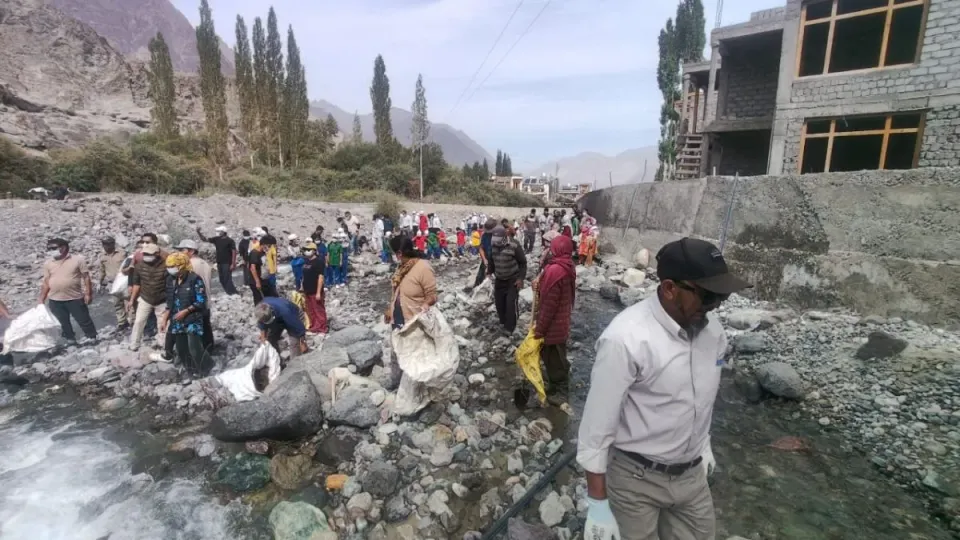August 14, 2025
JAMMU – More than 75 tonnes of non-biodegradable waste have been removed from the Indus River in Leh within hours of the launch of the “Singe Tsangspo Tsangde Lasgul” (Mission Indus Clean-Up), which was witnessing a remarkable display of community spirit and environmental commitment in Ladakh.
Besides, the drive to clean the Indus has also been launched in other parts of Ladakh, where volunteers were removing plastic debris, metal scraps, and other pollutants from the waterways.
In the Leh town, the volunteers were focusing on the Leh Stream — a 13.94 km waterway flowing from Gangles to Abi Spang before joining the Indus — along with adjoining nallahs and feeder streams. The effort not only rejuvenated stretches of the Leh Stream but also demonstrated how coordinated citizen action can protect Ladakh’s fragile mountain ecosystem.
The campaign was launched on Tuesday at the scenic Sindhu Ghat by the Chief Executive Councillor (CEC) LAHDC Leh, Tashi Gyalson, and Chief Secretary Pawan Kotwal, in the presence of senior Army and ITBP officers, councillors, Gobas, religious leaders, NGOs, trade and transport unions, and nearly 2,000 volunteers. Participants began with a solemn pledge in English and Bhoti to protect the Indus from pollution.
Chief Secretary Kotwal reflected on the Indus Valley Civilisation’s legacy and the sacredness of the river that gave India its name, urging stricter waste management, especially of poultry waste.
CEC Gyalson emphasised that the mission’s success depends on both individual responsibility and collective effort, calling for practical suggestions and strict enforcement to sustain the momentum. DC Romil Singh Donk called the Indus “the soul of India” and urged that the mission become a daily practice.
The Leh Stream was divided into 12 cleaning zones, each assigned to volunteer groups and institutions. Civil society and NGO participants included members of LEDeG, Zero Waste Ladakh, LEHO, Women’s Alliance Leh, LNP, Gobas of Leh Town, and local residents. Business and transport associations — Merchant Association, ALGHA, ALTOA, Taxi Union, Bikers Union, Tempo Traveller Union, 207/407 Union, Bus/Mazda Union, and Truck Union — joined in. Security forces from the ITBP and the Indian Army also played a key role.
Simultaneous clean-up drives were conducted in all subdivisions under their respective SDMs and Gobas (village headmen), with Khaltsi, Nubra, Likir, Nyoma, Kharu, and Durbuk showing strong mobilisation and commitment. The Indus clean-up drive also witnessed enthusiasm in Turtuk, which is the first village of India on the LOC in Ladakh.
As dignitaries and volunteers worked side by side along the riverbanks, the campaign took on a deeper symbolism — a collective reaffirmation that the Indus is more than a water source; it is a sacred thread binding Ladakh’s history, culture, and future. Organisers stressed that protecting this lifeline requires sustained effort, not just symbolic events.


